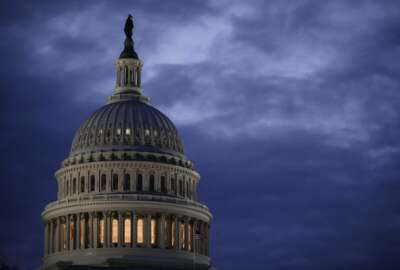
Federal retirees in 1980 could establish a standard of living and keep it even during 14 percent inflation and 11-plus percent the following year. Now, the Trump...
If you check the obituary section of your hometown newspaper chances are you will find a lot of people living well into their 90s. Some not so well.

Some of them actually spent more time in retirement than they did working, and that can be either a curse or a blessing depending in large part on your income. If it keeps pace with inflation that is great. If not, every year can mean more financial belt-tightening.
Many, probably most feds retiring after a full career with Uncle Sam live very comfortable lives. They establish a standard of living and keep it, even during periods of very high inflation such as 14 percent in 1980 and 11-plus percent the following year. People retiring from a company without a pension plan, or a fixed-for-life benefit without inflation protection find it harder to survive each year.
Fast forward to today. The Trump administration has submitted a legislative package that would, among other things, eliminate cost of living adjustments for current and future workers retiring under the Federal Employees Retirement System.
No more inflation catch-ups, ever! If you retire on $1,200 per month this year, in 2030 you would still receive $1,200, and ditto 10 years after that. A flatline pension — forever.
The legislation would mean no COLAs no matter how bad inflation might become and no matter how long — if you are among the majority of working feds — you live. So is that the ghost of the Christmas future for you?
The majority of current retirees, who are under the Civil Service Retirement System, would still get COLAs under the White House plan to slash the cost of the civil service retirement program. But those COLAs would be reduced by 0.5 percent below the actual rise in inflation. While nothing like the hit proposed for the FERS folks, who would lose all COLA protection forever, the value of the CSRS annuity would shrink each and every year there was any sort of inflation.
John Hatton, deputy director for Advocacy of the National Association of Active and Retired Federal Employees, estimated that over a normal lifetime in retirement and assuming a 3 percent inflation rate, the typical FERS retiree could lose one-third of their buying power, or cash to spend. That is because the pension would no longer keep pace with inflation.
Under the White House plan the employee contribution to the FERS program would rise one percent each year, over each of the next six years. That money used to finance benefits would represent lost take-home pay over an entire career.
It also proposes eliminating the FERS supplement which is a payment workers now get if they retire before age 62, when they are eligible for Social Security. That would be a hit that many people could avoid by simply working longer, but it would be a major blow to employees such as firefighters, law enforcement officers and air traffic controllers who are forced to retire at age 57. For many it would mean they would have to get another job after retiring from government.
NARFE estimated that eliminating the FERS annuity supplement for someone with 35 years of service and an estimated Social Security benefit, their loss would be $1,750 per month over 60 months.
So what are the odds any of the proposed changes will happen this year? Hatton, who worked in the Senate before joining NARFE, will outline the proposals and talk about their chances on today’s Your Turn radio show. Listen live at 10 a.m. EDT on www.federalnewsradio.com or at 1500 AM in the D.C. area. The show will also be archived on our home page to hear anytime.
On a somber note, Bill Olcheski Sr., the founding editor of The Federal Times, died Saturday at the age of 92. He was a proud former Marine and later served as a U.S. Army officer. He was a great editor but mostly one of the nicest people around. Those of us who knew him were the lucky ones. Messages to the the family can be sent to: The Olcheski Family, P.O. Box 6051, Falls Church, VA, 22040.
By Amelia Brust
In 1964, a Swedish tabloid journalist named Åke “Dacke” Axelsson exhibited four paintings by a chimpanzee from the Borås Djurpark zoo. Axelsoon pretended the works were by an unknown French artist named Pierre Brassau, to see whether art critics could tell the difference between avant-garde modern art and a chimp’s painting. They could not, and one of the paintings was purchased for $90.
Sources: Wikipedia
Copyright © 2024 Federal News Network. All rights reserved. This website is not intended for users located within the European Economic Area.
Mike Causey is senior correspondent for Federal News Network and writes his daily Federal Report column on federal employees’ pay, benefits and retirement.
Follow @mcauseyWFED

